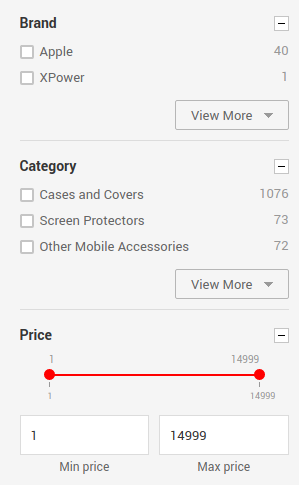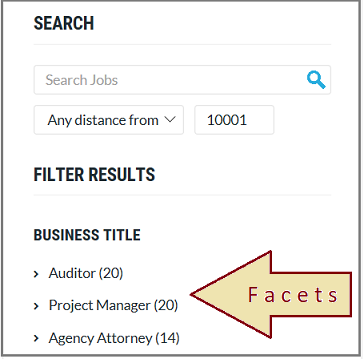What does facet mean? Facets are one of the best methods for narrowing down enormous search results/data to a chosen few depending on some attributes.

History of facets:
Facets have their underlying foundations in the Colon Classification (1933), which was considered and created by Indian mathematician and bookkeeper S. R. Ranganathan. Ranganathan felt that further grouping/classification system was expected to complete the fast expansion of multi-dimensional data. His vision for this new arrangement was that it should be simple and measured to use as the Meccano toy development diversion he had seen on a trek to London. Diverse pieces could be joined openly to build an alternate toy each time – as indicated by the child’s creative ability. It drove Ranganathan to build up a completely new Colon Classification which later turned into the reason for faceted classification.
Facets enable clients to pick a characterized set of attributes by which to limit search results to show those results that coordinate the client’s ideal item specification.
So, Facets help users as visible criteria to explore a lot of search results by displaying a summary about various partitions of the search results which helps users to narrow the navigation to a specific partition.
What are Search Filters?
Filters use one or more attributes of certain products to refine search results or category listings. In e-commerce, filters are often widely used to find products based on one criterion. This allows users to refine results to what he/she is looking for.
What are Search Facets?
Facets are a way to add specific, relevant options to your search results pages or category listings so that when users search for a product or browse categories, they can see where in your catalog they’ve ended up.
Facets and filters are used to restrict search and category listings to a subset of products. They save users time as they need not go through search results page after page of irrelevant products.
Where filters use certain product data as visible criteria visitors can use to refine the list of products, facets allow users to narrow results by SEVERAL different dimensions simultaneously. Those criteria or dimensions aa re a way to describe all different aspects of products present in search results.
Facets, on the other hand, are always used for building a user interface. A UI end-users can interact with to narrow their results, basically the representation of information in a systematic way as shown below.

As shown above, We can click on Brand “Apple” which will make all the search results shown have “Apple” as their brand. Along with this, if we are looking for “Screen Protectors”, we can click on the category “Screen Protectors”, which will make the results restrict to “Screen Protectors” category from “Apple” as Brand.
Decisions might not be taken based on one or two dimensions, so is the need for selecting multiple facets. Multiple filters will make search results more refined or following certain criteria.
Why Facets are needed?
Facets will show information in a systematic way. They will improve traditional search techniques by helping users to narrow down what they are looking for. This is called guided navigation.
As in the above example, “Apple” was a brand associated with the product, but facets need not be an attribute of a product, it can be a generic term to classify documents. For a search query, products are shown with classification into common data values, so that the user can apply one or more filters and refine results to what he/she is looking for. Faceted search highlights this in more detail.
Different Types of Facets:
- Checkboxes, Radio
- Dropdown
- Hierarchy
- Numeric Slider
- Date Range
- Star Rating
Summary:
Facet is an achievement in the field of data classification. It conveys information access in a more captivating, natural, and compelling way. E-commerce websites insist that shopping should happen rapidly and consistently. They need an advanced classification of search results using facets so that they can read a user’s mind about what they might need in order to filter results more precisely. For a user browsing website, a simple facet can often be easier to understand and faster to use. Thus need for a faceted search in order to use your content effectively, and save users time.



